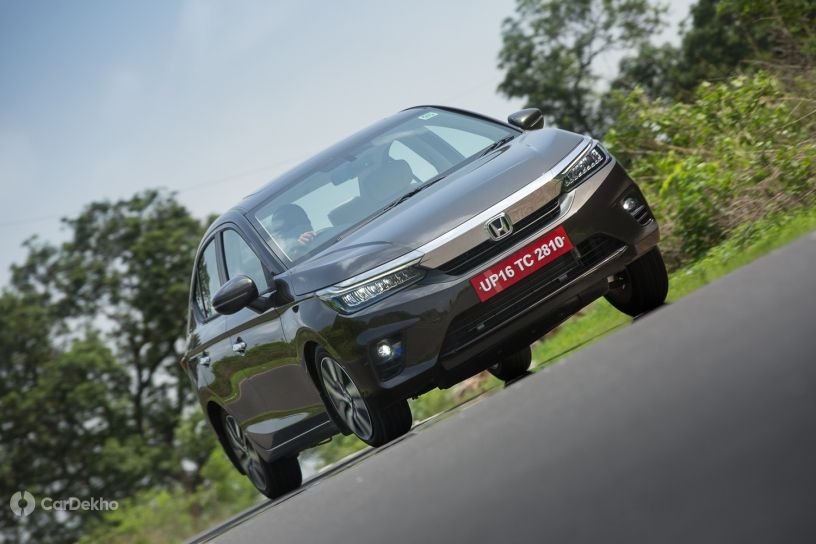Honda Needs To Prioritise SUVs For India And Here's Why
Modified On Dec 29, 2021 12:54 PM By Dhruv
- Write a comment
Honda sedans are special but it’s high time that the Japanese carmaker gives SUVs some thought

Utter the name Honda in context to cars and you will immediately start thinking about a nice sedan. For more than two decades, Honda has served up some of the most exciting, luxurious and reliable sedans India has seen. The multiple generations of the City and the Accord, and a couple of Civic’s have been enough to cement the fact that Honda knows how to do sedans really well.

But, does that really matter? The Accord has long been a figment of our imaginations, the Civic came back for round two, and despite being a spectacular package, it ended up with a permanent spot in the history books. The City is then the last real bastion of Honda’s sedan-ish strategy in India, but even it has not been able to hold down the fort. Then, is it time Honda looked elsewhere to revive its legacy?
Decline of sedans
The seeds of what we consider SUV-culture today were sown back in 2012, when the Renault Duster first appeared on the Indian automotive stage. Back then, we were not so liberal with the use of the word SUV. It was only reserved for the hardiest of vehicles, with high ground clearance, robust construction, and the ability to tread where most other vehicles wouldn’t dare to go.

After the Duster, we got the Ford EcoSport, and fast forward a couple of years, and you had the Maruti Vitara Brezza and the Hyundai Creta on your hands. That’s when things changed. SUVs were no longer required to have go-anywhere capabilities. The idea instead changed to a vehicle with a high seating position, excellent cabin space, and an imposing stance on the road. Honda didn’t know it then, but sedans had already lost the war.
Everyone started jumping onto the SUV bandwagon
Seeing the popularity that Maruti and Hyundai started enjoying in the subcompact and compact SUV segment, more and more manufacturers started working on bringing out a small SUV of their own. Tata was next with the Nexon, Mahindra got the XUV300, Hyundai got the Venue, and in recent times, Nissan and Renault have come up with the Magnite and the Kiger, respectively. Even Volkswagen and Skoda have jumped on to this train, with both manufacturers having introduced their compact SUVs into the Indian market.

Honda meanwhile made feeble attempts to hop on to this SUV express with the BR-V and the WR-V. The BR-V wasn’t a SUV even in the liberal fashion we use the word today. It was an MPV that was quite literally the Mobilio (a product that didn’t do all that well for Honda). And mostly, Honda’s timing wasn’t right. Three-row crossover people movers are becoming popular nowadays, but that wasn’t the case five to six years ago, when the BR-V was introduced. Then there is the WR-V. While it did manage to stand up to subcompact SUVs, it was essentially a re-engineered Jazz, and could never shake-off that hatchback vibe it carried. People wanted cars that resembled big bad SUVs, and the WR-V just didn’t match up to those standards.
The numbers game
Buying a car in India is quite literally a numbers game. A consumer looks at the fuel efficiency, number of features, years of warranty, but most importantly the price of a car, and what else can be had for that same price. The fourth-gen City for India was launched in 2014, and at the time, it retailed between Rs 7.42 lakh and just over Rs 11 lakh (ex-showroom). A year later, the first-gen Hyundai Creta was launched, and it was priced between Rs 8.60 lakh and Rs 13.60 lakh (are ex-showroom). The Creta did have a higher starting price, but at the top-end, it offered a diesel-automatic, something that the City didn’t. At the time, anyone looking to buy the City began to wonder, if I push for the Creta, I can get an ‘SUV?’ What sealed the deal was the bucketload of features the Creta offered at the time.

Fast forward to 2021, and the picture is still pretty much the same. Both cars have a new-gen model on the streets, the Creta continues to be more expensive, continues to offer many more features than the City, and has now cemented itself in the Rs 10 lakh to Rs 17 lakh price bracket. To give you an idea of exactly how dominant the Creta has been over the City, take a look at the sales figures for 2021, in the table below.
| Month |
Hyundai Creta |
Honda City |
| January 2021 |
12284 |
3668 |
| February 2021 |
12428 |
2524 |
| March 2021 |
12640 |
815 |
| April 2021 |
12463 |
3128 |
| May 2021 |
7527 |
1148 |
| June 2021 |
9941 |
2571 |
| July 2021 |
13000 |
3627 |
| August 2021 |
12597 |
3248 |
| September 2021 |
8193 |
3348 |
| October 2021 |
6455 |
3611 |
| November 2021 |
10300 |
2666 |
| Total |
1,17,828 |
30,354 |
Looking at the above given sales data, it is apparent that the sales of the City weren’t even one-third of the Creta’s. On an average, Hyundai sold more than 4 Creta’s for every 1 City sold by Honda.
Where does Honda go from here?
As a product, the City doesn’t fall far behind the Creta. It has its own unique plus points. We found this out when we did extensive comparisons between the two cars to judge their performance, handling, practicality, space and comfort, in comparison to each other. You can take a look at those in the links given at the end of the story.

However, the numbers do suggest that SUVs hold a plain and simple advantage over sedans. So it is quite obvious that is what Honda needs to do. The need of the hour is an SUV which offers traditional Honda characteristics - refinement, reliability and luxury. As far as whether it should be a subcompact SUV, or a compact SUV, we think the latter is ideal. That’s because the subcompact or the sub-4 metre SUV is too crowded. In the compact SUV space, the Kia Seltos, Hyundai Creta. Skoda Kushaq, Volkswagen Taigun and MG Astor are real players, but it is an easier space to break into, as the sub-4 metre SUV has more than 10 contenders.
Honda has even revealed that it is working on bringing a new SUV to India, but it failed to mention what segment it was targeting. What’s more, the SUV is unlikely to reach Indian showrooms before 2023. In the meantime, Honda will continue to lose market share to other carmakers like Tata, Mahindra, Kia and Hyundai, who had the foresight to bring in SUVs at the right time. Honda will have to bring in multiple SUV models to stop this from happening, something its rivals already have.
3 out of 3 found this helpful














